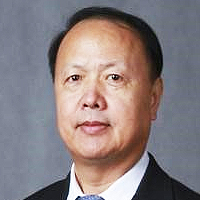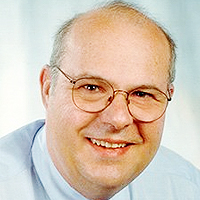Differences between traditional Visualization and Virtual reality on motor performance in novel climbers
Published on: 6th February, 2018
OCLC Number/Unique Identifier: 7347073164
This paper analyses the effect of virtual reality visualization (VRV) on climbers, with respect to the traditional visualization methodology. The study sample was made up of 21 novel climbers: Control Group CG (N=7), Traditional Visualization Group TVG (N=7) and Virtual Reality Group VRG (N=7). In order to implement the mental imagery through virtual reality, a 360º Ricoh Theta S camera and a pair of Woxter Neo VR1 goggles were used. The data analysis was carried out with a simple ANOVA of three means. No statistically significant differences were found. The results are discussed and future lines of research are established.
Harnessing Artificial Intelligence for Early and Evolution of Alzheimer’s Disease Detections and Enhancing Senior Mental Health through Innovative Art-Singing Therapies: A Multidisciplinary Approach
Published on: 28th June, 2023
The well-documented therapeutic potential of group singing for patients living with Alzheimer’s disease (PLAD) has been hindered by COVID-19 restrictions, exacerbating loneliness and cognitive decline among seniors in residential and long-term care centers (CHSLDs). Addressing this challenge, the multidisciplinary study aims to develop a patient-oriented virtual reality (XR) interaction system facilitating group singing for mental health support during confinement and enhancing the understanding of the links between Alzheimer’s disease, social interaction, and singing. The researchers also propose to establish an early AD detection system using voice, facial, and non-invasive biometric measurements and validate the efficacy of selected intervention practices. The methodology involves co-designing an intelligent environment with caregivers to support PLAD mental health through online group singing, addressing existing constraints in CHSLDs. The researchers will engage volunteers in remote singing interactions and validate the impact of voice stimulation for PLADs using a control group. The primary expected outcome is the development of an “Intelligent Learning Health Environment,” fostering interactions while adapting to individual PLAD situations and incrementally accumulating knowledge on AD signs. This environment will facilitate the transfer of knowledge and technologies to promote non-verbal interactions via singing, enabling intervention at the first symptoms. Additionally, the research will contribute to transforming CHSLDs’ living environments, informed by neuroscience insights, and potentially extend the “collaborative self-care” approach to support seniors in aging safely and healthily at home.
Effect of Balance Exercises with Smart Phone Based Virtual Reality Programme on Balance in Stroke Patients
Published on: 28th September, 2023
Background and objectives: A stroke is a neurological deficit, caused due to vascular changes. Impaired postural control and balance impairments in post-stroke patients are associated with a high risk of falls among stroke patients. The perturbation-based balance training is mainly used in older adults and balance impairment. Virtual reality (VR) as a novel technology is rapidly becoming a popular intervention for improving balance. VR can visualize computer-generated environments with a full field of view through Head-mounted displays (HMD-VR). This study was conducted to assess and investigate the effect of balance exercises with smartphone-based virtual reality programs on balance in stroke patients.Methods: This was a randomized single-group pre and post-test study design. 30 subjects met the inclusion criteria and were enrolled, assigned, and received intervention. Subjects were given perturbation-based balance exercises and smartphone-based virtual reality along with conventional physiotherapy. The intervention protocol was for 6 days/week for 4 weeks period. Results: Following 4 weeks of intervention showed improvement in postural control and balance which was assessed using BBS, TUG, VR BESS, BESTest, and SIS 3.0. Paired t-test was used to differentiate the mean significance. The mean pre to post-intervention difference is 12.6 with a p - value < 0.05. TUG score improved from pre to post-intervention difference is 1.443 with a p - value < 0.05. VR BESS score improved from pre to post-intervention difference is 10.266 with a p value < 0.05. The mean BESTest pre to post-intervention difference is 11.467 with a p - value < 0.05. SIS 3.0 score improved from a pre to post-intervention difference is 20.33 with p - value < 0.05. The result of this study showed a highly significant difference in pre and post-treatment.Conclusion: The study concludes that perturbation-based balance exercises with smartphone-based virtual reality programs are a useful adjunct to improving balance in stroke patients along with conventional physiotherapy.
Augmented and Virtual Reality in Forensic Odontology: Practical Implementations
Published on: 4th October, 2023
Forensic odontology’s evolution from manual to digital methods signifies a pivotal transition. Augmented Reality (AR) and Virtual Reality (VR) further this transformation by merging the physical and digital realms. This brief communication explores how AR and VR can enhance forensic odontology, offering precision, interactivity, and advanced analysis. It delves into the current landscape and envisions future possibilities, emphasizing their role in shaping precise and collaborative forensic practices. Additionally, challenges and considerations for implementing AR and VR in this field are discussed.
















